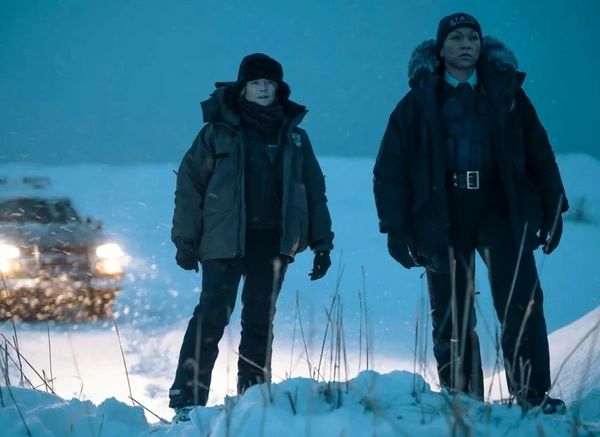Some places are really difficult to reach, some are not well-known, and some are not allowed to be visited. Then there are places you might want to visit, but they’re gone now. From land disappearing because of climate change to waterfalls disappearing because of people, here are 10 spots you can’t visit anymore.
Guaíra Falls
Before 1982, if you went to the Upper Paraná River near the Brazil-Paraguay border, you would see something amazing: a bunch of waterfalls called the Guaíra Falls. There were at least 18 of them, and they dropped a total of 375 feet. People said the noise from the falls was so loud you could hear it from 20 miles away.
The Guaíra Falls were thought to be the most powerful waterfall in the world in terms of the amount of water they had. But they couldn’t stand up to the Paraguayan and Brazilian governments. These countries started building the Itaipú Dam, a huge power plant, in the 1970s. By the time it was finished in 1982, the dam had created a huge reservoir that completely covered up the famous waterfall. So, the Guaíra Falls disappeared.
The Pink and White Terraces
Once upon a time, in New Zealand, there were amazing terraces known as the Pink and White Terraces. They were called the Eighth Wonder of the World. These terraces formed from hot water filled with minerals flowing down near Lake Rotomahana on the North Island. As the minerals cooled, they made beautiful terraces filled with warm water.
The Māori people cherished the Pink and White Terraces for a long time, seeing them as a treasure. When Europeans came to New Zealand, people from all over the world visited to admire their beauty and bathe in the pools, which were believed to have healing powers. The site also brought in money for the local Māori, who worked as guides. But everything changed in 1886. On June 10 of that year, Mount Tarawera erupted. The Pink and White Terraces and the nearby village of Te Wairoa vanished. The eruption killed more than 100 people and buried this famous wonder under ash and rock. Later, the area flooded, making Lake Rotomahana even bigger.
Rungholt
Long ago, there was an island called Strand off the northwest coast of what’s now northern Germany. In January of 1362, a big storm called the Grote Mandrenke, or “Great Drowning of Men,” caused a flood that wiped parts of the island away. This flood also destroyed the medieval town of Rungholt. People talked about Rungholt like it was a lost city from a story for many years (its remains might have been found in 2023). What was left of Strand stayed above water for 300 more years. Then, in 1634, another huge flood came, splitting Strand into smaller islands called Nordstrand, Pellworm, and Nordstrandischmoor.
East Island
It’s not just people who suffer when islands vanish. In 2018, a hurricane made East Island disappear. East Island was part of the French Frigate Shoals in the Hawaiian Islands. Its disappearance hurt the local animals. About 30 percent of all Hawaiian monk seals were born there, and many Hawaiian green sea turtles laid eggs there. Losing East Island was really bad for these endangered animals. Studies show that they’ve probably moved to other islands in the French Frigate Shoals, but those islands are also at risk from rising sea levels. Some animals are still on East Island, which has kind of started to come back after the hurricane, but it’s only half the size it used to be.
Doggerland
Doggerland was once a big piece of land that connected Great Britain to Europe. It was home to animals like cave lions, saber-toothed cats, mammoths, and cave hyenas, as well as humans like us and our ancestors. But as the Earth got warmer, Doggerland started to flood. Then, about 8200 years ago, a huge flood from a lake in North America and a tsunami from a landslide off Norway covered it with water.
The drowned remains of what’s now called “The Atlantis of the North Sea” stayed hidden underwater until the early 1930s. That’s when a fishing trawler found a barbed antler point that might have been used as a spear. This discovery showed archaeologists that Doggerland existed. Nowadays, archaeologists, citizen scientists, and fishermen still find old objects left behind by people who lived there long ago.
Bering Land Bridge
When we talk about lost land, we have to mention the Bering Land Bridge. This area connected North America to Asia and was part of Beringia, a place between Russia’s Lena River and Canada’s Mackenzie River. It’s believed the land bridge formed around 35,700 years ago during the Ice Age when sea levels dropped, making a path between the two continents.
Some researchers think humans traveled to the Americas using the Bering Land Bridge. They believe people lived on the 600-mile-wide land, hunting elk and small animals and using wood fires. Like Doggerland, when the Ice Age ended, rising sea levels covered most of the Bering Land Bridge, cutting off the path between the continents. Only a few islands are left above water now.
The Irharhar River
The Sahara desert is known for being very hot and dry, but long ago, the part of Africa it covers wasn’t always like that. Between 130,000 and 100,000 years ago, there were rivers and lakes all over the area. One of these rivers was the Irharhar, which connected two regions with more moisture: a rainy area in the south and the Mediterranean in the north. The land around it would have been full of plants and animals.
A 2013 study suggests that the Irharhar river may have played a big role in early human migration. The researchers think that the lost river systems in northern Africa could have been paths that our ancestors used to leave the continent. But today, the Irharhar river is gone, buried under sand dunes in the desert.
Dry Falls
The end of the last ice age caused big floods that left marks on Earth. Dry Falls in Washington shows how powerful these floods were. Even though it’s called Dry Falls now, it used to be a huge waterfall, five times wider than Niagara Falls. The water was 10 times stronger than all the rivers in the world combined. The waterfall formed when ice blocked a river, making a giant ice dam. Water kept building up behind the ice until it broke through, causing huge floods in the northwest. There wasn’t just one flood like this—geologists think there were several over thousands of years. These floods changed the landscape a lot. But when the ice dams melted and glaciers moved back, the big lakes stopped flooding, and the rivers went back to normal. Dry Falls isn’t a waterfall anymore; it’s just a regular cliff.
Old Man of the Mountain
For many years, there was a big rock on Cannon Mountain in New Hampshire that looked like an old man’s face. The Indigenous Abenaki called him “Stone Face,” while white settlers called him the “Old Man of the Mountain.” But he wasn’t a real old man—it was just a rock.
The Old Man, like Dry Falls, was shaped by the last ice age. The freezing and thawing of the climate caused erosion, making the rock look like a human face. The Old Man of the Mountain became a symbol of New Hampshire, but he started to break apart over time. Workers had to fix the rocks many times in the 20th century as he kept falling apart. Sadly, the famous Old Man of the Mountain collapsed completely on May 3, 2003. Now, there’s a memorial plaza where he used to be.
Nuna Supermountains
If you’re impressed by the Himalayas, you would have been amazed by Earth’s old supermountains. One of these, called the Nuna supermountains, was as tall as the Himalayas but stretched over about 5000 miles. (For comparison, the Himalayas are only about 1500 miles long.) The Nuna supermountains covered an entire supercontinent and formed around 2 billion years ago.
When the mountains wore away, they released a lot of phosphorus, iron, and other nutrients into the ocean, boosting the amount of oxygen in the air. According to a study from 2022, published in Earth and Planetary Science Letters, this was great for evolution. The study suggests that these extra nutrients helped cells evolve into more complex life forms like animals, plants, and fungi.









